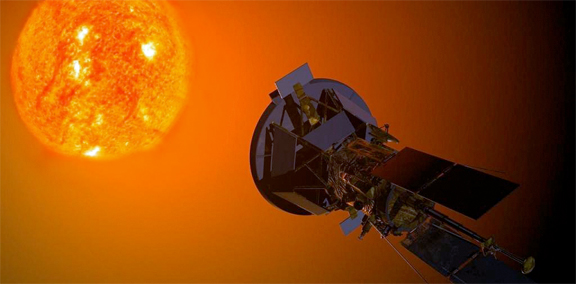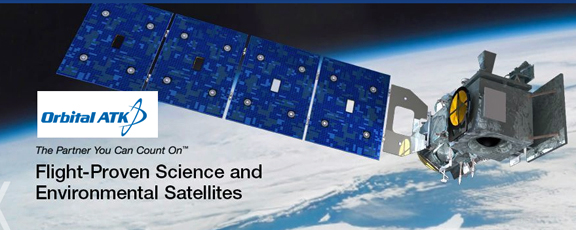[SatNews] Orbital ATK (NYSE: OA) has teamed with United Launch Alliance (ULA) to launch NASA’s Solar Probe Plus (SPP) mission on ULA’s Delta IV Heavy rocket.
A fully integrated third stage provided by Orbital ATK will give the spacecraft the high-energy boost needed to send it on its mission to study the Sun’s outer atmosphere. Orbital ATK’s third stage leverages flight-proven inertial navigation, avionics, attitude control and separation systems used on the company’s Pegasus®, Minotaur and Minotaur-C launch vehicles. The venerable STARTM 48BV rocket motor, which traces its roots back to the 1980s, will provide the propulsion. The STAR 48 motor series has logged more than 130 successful missions.
After separating from the launch vehicle’s second stage, Orbital ATK’s third stage motor will ignite and accelerate the SPP spacecraft, making it one of the fastest man-made objects in history. During the motor’s nominal burn time of 81 seconds, Orbital ATK’s flight computer and guidance control system will guide the SPP observatory on its way to an elliptical orbit around the Sun. The observatory, using several gravity assists from Venus, will ultimately pass within 10 solar radii of the Sun, many times closer to the sun than the planet Mercury.
The Orbital ATK stage is being designed specifically to support the challenging SPP mission. When vertically integrated, it will measure approximately seven feet tall and four-and-a-half feet in diameter. The stage will be developed at the company’s facilities in Dulles, Virginia; Chandler, Arizona; and Elkton, Maryland.

Artistic rendition of NASA's Solar Probe Plus mission.
In addition to the third stage, Orbital ATK’s contributions to the Delta IV Heavy launch vehicle include cutting-edge technologies from across the company. These include 12 key composite structures, manufactured using advanced layup, machining and inspection techniques in Iuka, Mississippi, and Clearfield, Utah; the RS-68 rocket engine’s nozzle, manufactured in Promontory, Utah; the booster separation rocket motors, manufactured in Rocket Center, West Virginia; and the diaphragm propellant tanks, manufactured in Commerce, California.
The SPP mission, which will enter the Sun’s outer atmosphere to study the streams of charged particles the Sun hurls into space, is scheduled to launch in 2018. The SPP spacecraft is being developed at the Johns Hopkins Applied Physics Laboratory in Laurel, Maryland. SPP is part of NASA’s “Living with a Star” program, managed by NASA’s Goddard Space Flight Center in Greenbelt, Maryland, for the Science Mission Directorate at NASA Headquarters, Washington, D.C.
“One of Orbital ATK’s strengths is providing new launch capabilities that leverage flight-proven subsystems,” said Ron Grabe, President of Orbital ATK’s Flight Systems Group.



